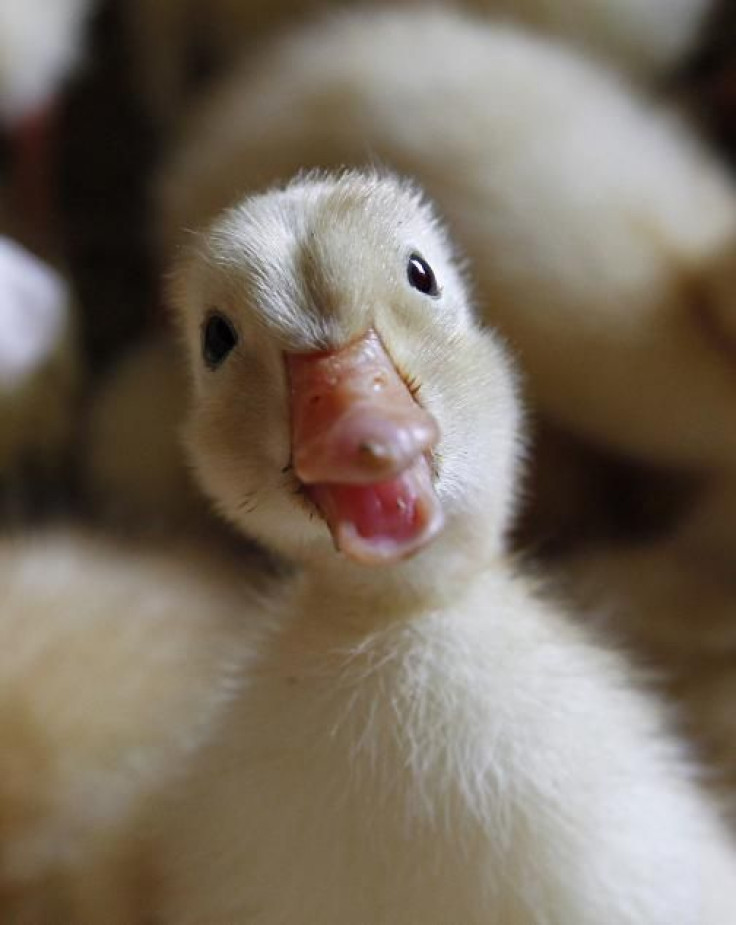3-D Printing Engineers To Replace Foot Of Buttercup, Disabled Duck

A Tennessee-based 3-D printing company is currently at work designing a brand new foot for an unusual amputee patient. The Tennesean reports that engineers at NovaCopy have agreed to donate their time and expertise to help Buttercup — an adult male duck, born with a backward left foot. Through 3-D printing technology, the disabled duck may finally have a shot at living a normal, healthy life.
Buttercup, who was hatched last year in a high school biology lab, had his left foot amputated by veterinarians in February, when caregivers at a waterfowl animal shelter noticed that the duck would bleed every time he tried to walk.
"When he would walk outside, his leg would start bleeding," Mike Garey of the Feathered Angels Waterfowl Sanctuary told reporters. "I knew Buttercup would be better off as a peg-leg duck than a duck with a disabled foot."
During the lengthy healing process, the shelter began looking for viable prosthesis options, mindful of the fact that any model would require a high level of precision in order to emulate the calculated features of the webbed foot.
Garey surmised that such minute precision could be achieved only through 3-D printing technology, and decided to approach the state’s only reseller, NovaCopy — a company known for its unique, high-resolution technology.
The project represents yet another brand new challenge for 3-D printing engineers, whose expert services are rapidly becoming in demand in a broad variety of fields as companies continue to stumble across new areas where the technology is ideal. Designers can now take their files to a printer and a have a prototype ready within 24 hours.
"There are wide-ranging uses — aerospace, medical, consumer, and industrial purposes are a few. It gives most businesses the ability to take products to the market faster than their competition,” Melissa Ragsdale, NovaCopy’s president of 3-D printing solutions, told The Tennessean.
The shelter developed the design from photographs of a similar duck’s foot, combined the images through 3-D design software and sent the files to Joel Graves — a printing engineer at NovaCopy, who set to work preparing the machine for a process that would exceed 13 hours.
Earlier this week, Garey received the prototype and the materials needed to make the foot. He started the 16-hour molding process on Friday, and hopes that Buttercup will be fitted with the prosthesis before the end of the weekend.
"The whole point is to educate people on how cool and intelligent these animals are," Garey said. "Buttercup's doing great."



























